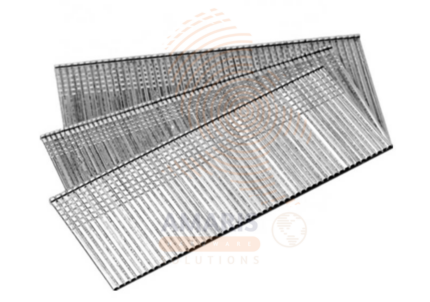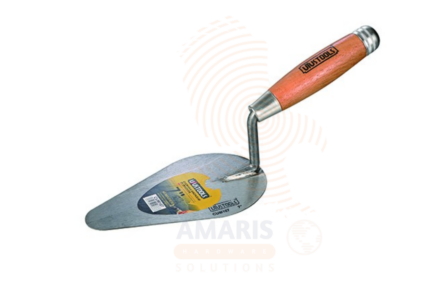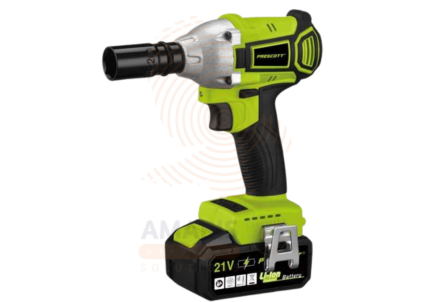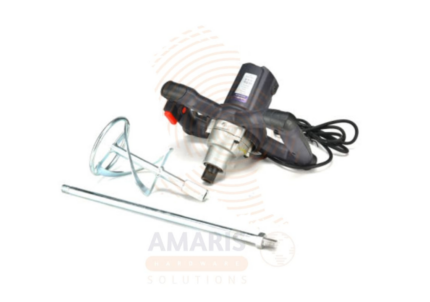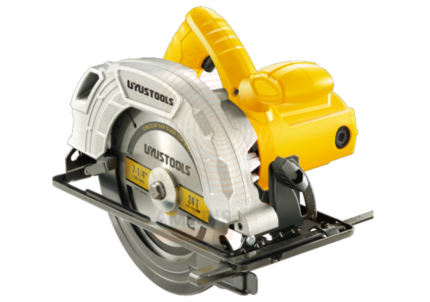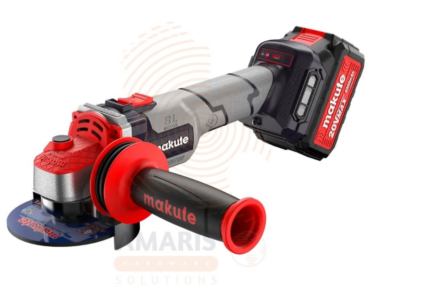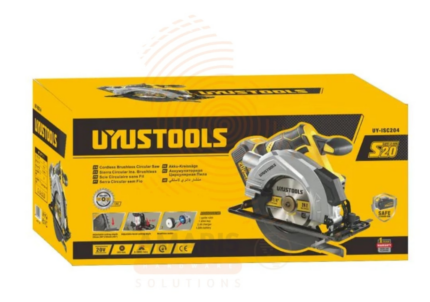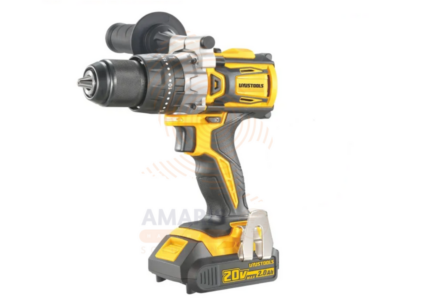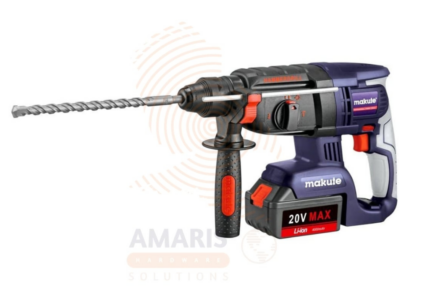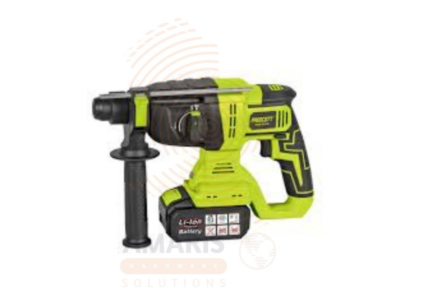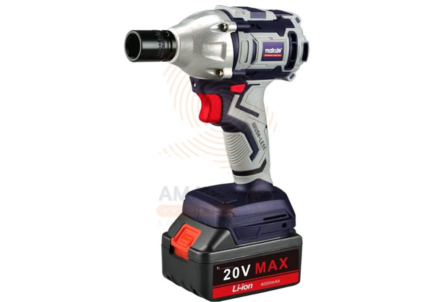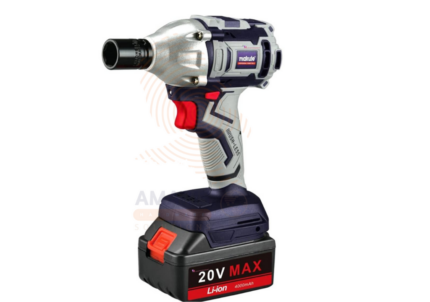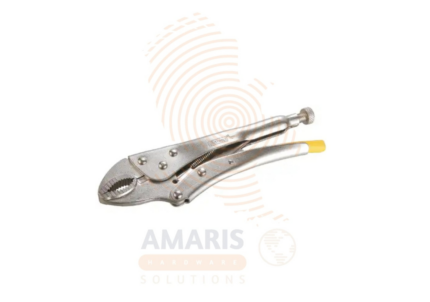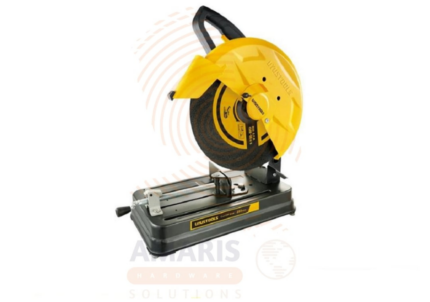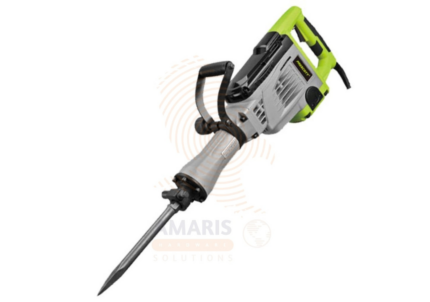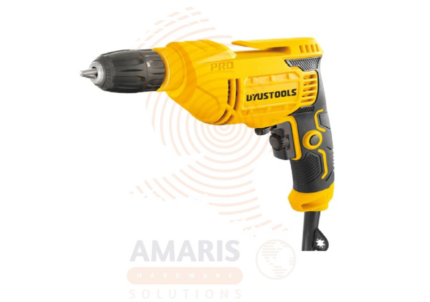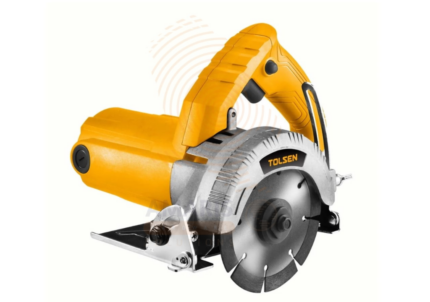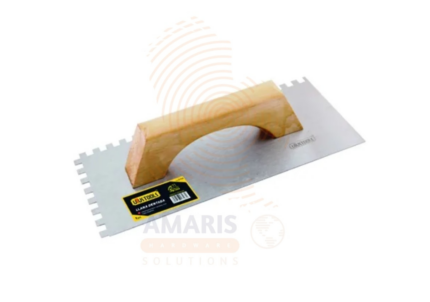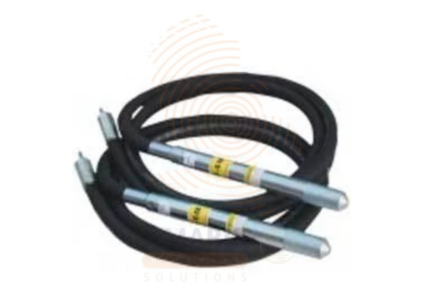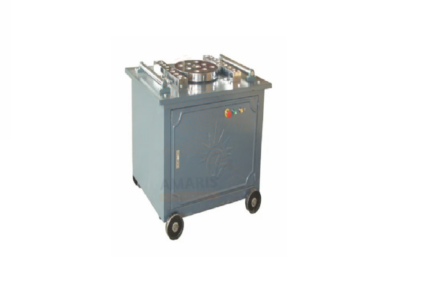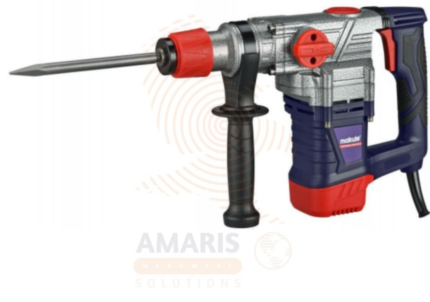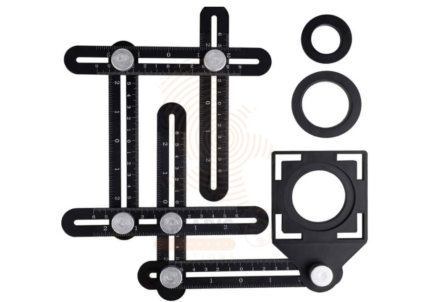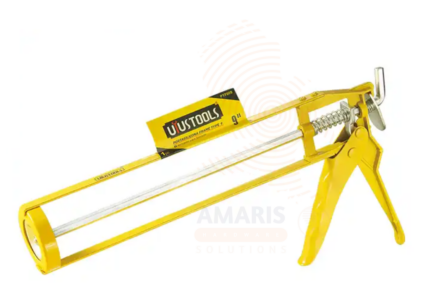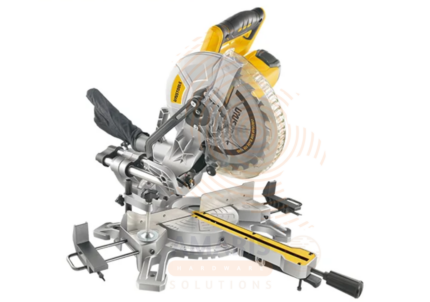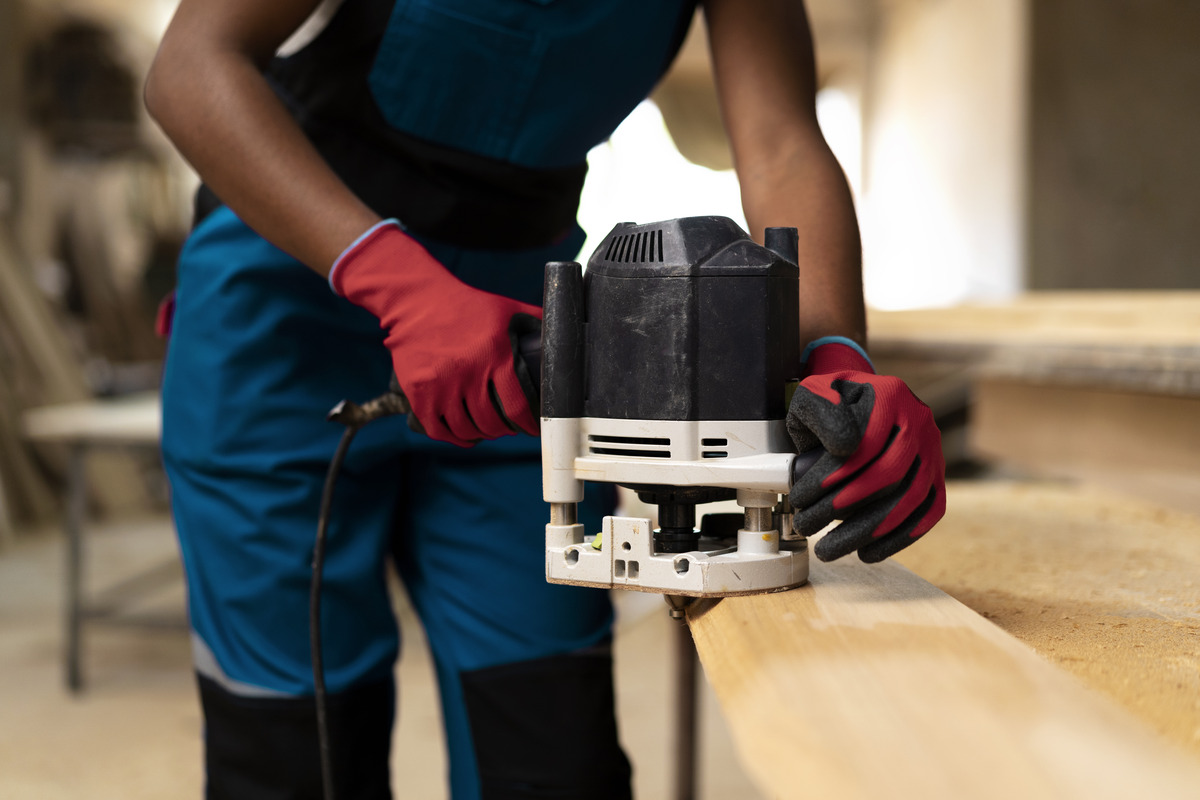
Brad Nail F Series
A Brad nail f series refers to a specific type of nail used in carpentry and woodworking. The term "Brad" typically denotes a thin and small finishing nail, and the "18 gauge" specifies the thickness or diameter of the nail. In the context of a Brad nail series 18 gauge, it means that the nails are 18-gauge in thickness. These nails are relatively slender and are commonly employed for delicate and detailed work, such as attaching trim, molding, or other finish materials. The 18-gauge Brad nails strike a balance between providing adequate strength and minimizing the size of the hole left in the material, making them suitable for applications where a discreet and neat finish is desired.
Brushless Motor Impact Wrench
A brushless motor impact wrench is a type of power tool designed for efficiently and rapidly tightening or loosening nuts, bolts, and other fasteners. Unlike traditional impact wrenches that utilize brushed motors, brushless motor impact wrenches employ advanced electronic technology to generate power. These motors operate without physical brushes, reducing friction and wear. This results in increased efficiency, longer tool lifespan, and improved performance.
Brushless motor impact wrenches typically offer higher torque output, better energy efficiency, and longer battery life compared to their brushed counterparts. They are often cordless and powered by rechargeable lithium-ion batteries, providing users with the flexibility to use them in various settings without being tethered to an electrical outlet. The absence of brushes in the motor contributes to reduced maintenance requirements and a more reliable and durable tool for demanding applications, such as automotive repair, construction, and industrial tasks.
Caulk Gun
A caulk gun, also known as a caulking gun or a sealant gun, is a hand-held tool designed for dispensing and applying caulking or sealant materials. It typically consists of a metal or plastic frame with a trigger mechanism, a rod to advance the caulk cartridge, and a nozzle for precise application. The caulk gun is commonly used in construction, home improvement, and various maintenance projects to seal gaps, joints, or seams in order to prevent air, water, or pests from infiltrating a structure.
Cement And Paint Mixer
A cement and paint mixer is a mechanical device designed to efficiently and homogeneously blend cement or paint constituents to achieve a uniform and consistent mixture. Typically utilized in construction and painting applications, these mixers come in various designs, including portable or stationary models. They feature rotating blades, paddles, or agitators that facilitate the thorough mixing of dry or liquid materials, ensuring the creation of a well-mixed and homogeneous product suitable for construction or painting purposes.
Cement Blender
A cement blender is a mechanical device designed for the purpose of mixing and blending various components of cementitious materials, such as cement, sand, and water, to create a homogenous mixture. This blended mixture is commonly used in construction and building projects, particularly for applications like concrete production. The blender typically features a rotating drum or container that facilitates the thorough mixing of the ingredients, ensuring a consistent and uniform composition for the construction materials.
Cement Blender – SDS Plus
A cement blender with an SDS-PLUS mechanism typically refers to a power tool designed for mixing cement, mortar, or other construction materials. The term "SDS-PLUS" refers to a specific chuck and bit system commonly used in rotary hammers and drills. SDS-PLUS chucks allow for quick and secure attachment of drill bits and other accessories.
In the context of a cement blender with SDS-PLUS, it likely means that the tool has a specialized chuck system for easy attachment of mixing paddles or blades used in blending cement or similar materials. The SDS-PLUS system is known for its quick-change capability, enhancing efficiency and convenience when working with different attachments. The blender's design may include features to ensure effective mixing of construction materials, making it suitable for tasks like preparing mortar or concrete on construction sites.
Chalk Line Reel Set
A 2pcs Chalk Line Reel Set typically refers to a package or kit that includes two chalk line reels. A chalk line reel is a tool used in construction and carpentry for marking straight and level lines on surfaces such as walls, floors, and ceilings. The set usually includes two individual chalk line reels, each consisting of a housing containing a length of string or cord coated with chalk powder.
The process involves stretching the string between two points, snapping it against the surface to leave a straight chalk line, which serves as a guide for various construction or layout tasks. Having two chalk line reels in a set can be convenient for projects that require multiple reference lines or for situations where two people are working simultaneously. This set often includes chalk powder or chalk cartridges that can be loaded into the reels for marking the lines.
Circular Saw
A circular saw is a power tool equipped with a rotating circular blade, typically with teeth along its edge, designed for cutting various materials such as wood, plastic, metal, or masonry. It is commonly used in carpentry, construction, and other applications to make straight or beveled cuts with precision and efficiency. The circular saw is versatile and can be handheld or mounted on a table or other stationary surface, depending on the specific model and intended use.
Combination Square
A combination square is a versatile measuring tool used in woodworking, metalworking, and other precision tasks. It typically consists of a ruler with a sliding adjustable square head that can be locked at different angles along the length of the ruler. The square head can be used as a 90-degree square for checking or marking right angles, or it can be positioned at other angles to measure and mark various angles accurately. The ruler often has markings in both imperial and metric units, providing flexibility for different measurement systems. Additionally, combination squares may have a level bubble for ensuring horizontal or vertical alignment.
Combination Try Square
A Combination Try Square is a versatile measuring tool used in woodworking and metalworking to ensure the accuracy of right angles and measure or check the squareness of edges and surfaces. It typically consists of a ruler or blade attached to a handle at a 90-degree angle, allowing for both linear measurements and the verification of perpendicular angles. The "combination" aspect often refers to additional features, such as a spirit level or an adjustable head, which enhances its functionality for various precision tasks.
Cordless Brushless Circular Saw
A cordless brushless circular saw is a power tool designed for cutting various materials, such as wood, metal, or plastic, without the need for a direct electrical connection. "Cordless" indicates that the tool operates on rechargeable batteries, providing increased portability and freedom of movement. Meanwhile, "brushless" refers to the type of motor used in the saw. Brushless motors are more efficient, durable, and require less maintenance compared to traditional brushed motors. The combination of cordless operation and a brushless motor makes the circular saw a versatile and convenient tool for both professional and DIY applications.
Cordless Brushless Impact Drill
The Cordless Brushless Impact Drill is a high-performance, battery-powered tool designed for both professional and DIY applications. Equipped with a brushless motor, it delivers increased efficiency, longer runtime, and reduced maintenance compared to traditional brushed drills. Its compact, ergonomic design ensures comfortable handling and precise control, even in tight spaces. Ideal for drilling and driving in wood, metal, and masonry, this drill comes with multiple speed settings and adjustable torque for versatile use. The durable construction ensures long-lasting performance, making it an essential addition to any workshop or job site.
Cordless Hammer Drill
A cordless hammer drill is a portable power tool designed for drilling holes in various materials, particularly masonry and concrete, by combining rotary drilling with a pulsating hammering action. Unlike traditional corded hammer drills, cordless models are powered by rechargeable batteries, providing greater mobility and flexibility in construction, woodworking, and other applications where a corded power source may be inconvenient or unavailable. Cordless hammer drills are equipped with a hammer function that enables them to break through tough surfaces, making them versatile tools for both drilling and light chiseling tasks.
Cordless Rotary Hammer Drill
A Cordless Rotary Hammer Drill is a versatile power tool designed for drilling into hard materials such as concrete, masonry, or stone. It combines the functions of a regular drill with a hammering action, allowing for more efficient and faster drilling in tough surfaces. The cordless feature means it operates using rechargeable batteries, providing greater mobility and flexibility on job sites without the constraints of a power cord. This tool is commonly used in construction, renovation, and other applications where high-powered drilling in challenging materials is required.
Cordless Screwdriver
A cordless screwdriver is a portable and electrically powered tool designed for driving screws. It typically features a rechargeable battery, eliminating the need for a constant power source or an external power cord. Cordless screwdrivers are commonly used in various applications, such as assembling furniture, installing fixtures, and performing other tasks that involve driving or removing screws. They provide convenience and flexibility due to their mobility, making them a versatile and essential tool in both professional and DIY settings.
Cordless Wrench
A cordless wrench, also known as a cordless impact wrench, is a portable power tool designed for tightening or loosening nuts and bolts. It operates without the need for a power cord, relying on rechargeable batteries for its power source. Cordless wrenches are commonly used in automotive repair, construction, and various maintenance applications, offering the convenience of mobility and flexibility in comparison to their corded counterparts. These tools typically feature a motor-driven mechanism that generates rotational force, providing high torque output for efficient and quick fastening or loosening of bolts and nuts.
Deep Hexagonal Socket
A Deep Hexagonal Socket refers to a specialized tool used in mechanical and automotive applications. The term "1/2"" indicates the drive size of the socket, which is compatible with a 1/2-inch ratchet or breaker bar. The "Deep" designation means that the socket has an extended length compared to standard sockets, allowing it to reach bolts or nuts situated in deeper recesses. The "Hexagonal" aspect indicates that the socket has a six-sided opening (hex) designed to fit hexagonal fasteners or nuts. This type of socket is commonly used for various tasks, such as loosening or tightening hexagonal bolts in automotive repairs or other mechanical applications where a deep reach is necessary.
Demolition Hammer
The Demolition Hammer is a powerful, heavy-duty tool designed for breaking, chipping, and demolishing concrete, masonry, tiles, and other tough materials. Equipped with a robust motor and durable hammering mechanism, it delivers high impact energy for efficient demolition work. Ideal for construction, renovation, and remodeling projects, this tool is built for both professional contractors and serious DIY enthusiasts. Its ergonomic design ensures comfort during prolonged use, while vibration reduction features minimize user fatigue.
Demolition Hammer Drill
A demolition hammer drill, often referred to as a demo hammer or breaker hammer, is a powerful handheld tool designed for heavy-duty tasks in construction and demolition. It combines the functions of a hammer and a drill to break through and remove concrete, masonry, and other hard materials. Typically featuring a pneumatic or electric power source, a demolition hammer drill delivers rapid, repetitive blows to the surface, effectively chipping away and breaking up the material. This tool is commonly used in construction, renovation, and demolition projects to facilitate the removal of old structures or the creation of openings in hard surfaces.
Diamond Cup Wheels Double Row Segmented
A diamond cup wheel with a double-row segmented design is a specialized grinding tool used in various applications, primarily in the field of construction and stone processing. The term "diamond cup wheel" refers to the tool's composition, where industrial-grade diamonds are bonded to the wheel's surface to facilitate efficient material removal through abrasion.
The "double-row segmented" aspect of the cup wheel describes its segmented rim structure. The rim, or outer edge of the wheel, is divided into two rows of segments with gaps or spaces in between. Each segment contains diamond particles that contribute to the grinding or cutting action. This design enhances the wheel's durability, ensures a more consistent material removal rate, and allows for better cooling during operation.
Diamond Cup Wheels Turbo Row
A diamond cup wheel turbo row is a specialized grinding tool used in construction and masonry for shaping, smoothing, and grinding hard materials such as concrete, stone, or other abrasive surfaces. It consists of a circular wheel with diamond-coated segments arranged in a turbo row pattern, which enhances the tool's cutting and grinding efficiency.
The term "turbo row" refers to the specific arrangement of the diamond segments on the wheel. These segments are strategically positioned in a spiral or turbo-like pattern, allowing for a more aggressive and faster material removal compared to regular cup wheels. The diamond coating on the segments ensures durability and effectiveness in grinding hard substances. Diamond cup wheels with turbo rows are commonly used in tasks like concrete surface preparation, stone shaping, and grinding applications in construction and related industries.
Diamond Grinding Wheel (Single Teeth)
A diamond grinding wheel (single teeth) is a specialized abrasive tool used in various industries for precision grinding and shaping of hard materials. It consists of a circular disc with a single layer of diamond grains bonded to its surface. Diamond, being one of the hardest known materials, enables the wheel to efficiently grind and cut through materials such as metals, ceramics, glass, and composites. The single teeth design implies that the abrasive material is concentrated in specific areas, allowing for precise and controlled material removal during the grinding process. Diamond grinding wheels are commonly employed in applications where high precision and durability are essential, such as in tool and die making, precision machining, and the production of intricate components.
Diamond Grinding Wheel(Turbo)
A diamond grinding wheel (turbo) is a specialized tool used in machining and abrasive processes. It consists of a circular disc with diamond particles bonded to its surface, allowing it to effectively grind and shape hard materials such as metal, stone, or concrete. The term "turbo" in this context typically refers to the design of the wheel, featuring a segmented rim with openings that help dissipate heat and improve cutting efficiency. Diamond grinding wheels are known for their exceptional hardness and durability, making them suitable for tasks that require precision and the ability to work on materials with high hardness levels.
Electric Hammer Drill
An electric hammer drill is a versatile power tool designed for drilling into hard materials, such as concrete, stone, or masonry. It combines the functions of a regular drill with a hammering action, allowing it to break through tough surfaces more effectively. The hammering mechanism involves rapid, short, and powerful thrusts, enhancing the drill's ability to penetrate hard materials. The electric motor powers both the rotational drilling and the hammering action, making the tool suitable for tasks that require more force than a standard drill can provide.
Frog Tamping Rammer
A Frog Tamping Rammer is a compact, high-impact compaction machine used in construction for compacting soil, gravel, and sand in confined or hard-to-reach areas. Unlike larger plate or roller compactors, this rammer delivers a powerful vertical force through a narrow, foot-like base (hence the name “frog”) to compact cohesive and granular soils. Commonly powered by gasoline or diesel engines, it is ideal for trench work, pipeline backfilling, foundations, road repairs, and other applications where precision and deep compaction are essential. Known for its portability and high compaction force, the frog rammer is indispensable in urban construction, civil engineering, and landscaping projects.
Hammer Drill
A hammer drill is a versatile power tool designed for drilling into hard materials such as concrete, stone, brick, or masonry. It combines the functionality of a regular drill with a hammering or percussive action, which helps break up and remove material more effectively. This tool is commonly used in construction and renovation projects where drilling into tough surfaces is required. The hammer drill's distinctive feature is its ability to generate rapid, short, and powerful thrusts in addition to the rotary motion, making it well-suited for challenging drilling tasks in harder materials.
Marble Cutter
A marble cutter is a power tool specifically designed for cutting, shaping, and carving marble and other similar hard materials. It typically consists of a motorized blade or abrasive disc that spins at high speeds, allowing precise and efficient cutting of marble tiles, slabs, or blocks for various construction and decorative purposes. Marble cutters are essential in the stone processing industry and are widely used by craftsmen, builders, and contractors involved in projects that require the manipulation of marble or other hard stones.
Octagonal Head Hammer – Wood Handle
PRODUCT DESCRIPTION
An octagonal head hammer with a wood handle is a type of hand tool designed for striking and driving nails, shaping metal, or performing other tasks in construction and woodworking. The term "octagonal head" refers to the shape of the hammerhead, which has eight flat sides. This design provides multiple striking surfaces, allowing for versatile use and precise control. The wood handle offers a comfortable grip and helps absorb some of the shock generated during use, reducing strain on the user's hand and wrist. Overall, an octagonal head hammer with a wood handle combines durability, functionality, and ergonomic design for various manual tasks in carpentry and related trades.
Plastering Trowel
PRODUCT DESCRIPTION
A plastering trowel is a hand tool used in construction and masonry work for applying and smoothing plaster, stucco, or other similar materials onto walls, ceilings, or other surfaces. It typically consists of a flat, rectangular metal blade with a handle, designed for spreading and finishing plaster evenly, ensuring a smooth and uniform surface. Plastering trowels come in various sizes and shapes to accommodate different aspects of plastering and finishing tasks.
Plastering Trowel with Teeth
PRODUCT DESCRIPTION
A plastering trowel with teeth, commonly known as a "notched trowel" or "toothed trowel," is a specialized hand tool used in construction and masonry for applying adhesive or mortar to surfaces, such as when installing tiles or laying flooring. It is characterized by a flat metal blade with evenly spaced teeth or notches along one or more edges. The teeth help create uniform ridges or grooves in the applied material, ensuring proper adhesion and facilitating an even distribution of the substance onto the substrate. This type of trowel is particularly useful for tasks that require consistent coverage and bonding, such as in the installation of tiles or other similar construction applications.
Plastering Trowel with Teeth – Wood Handle
A Plastering Trowel with Teeth - Wood Handle is a specialized tool used in the field of construction and masonry for applying and texturing plaster or stucco on walls and ceilings. The trowel is characterized by having teeth or serrations on its surface, which create grooves or patterns in the applied material. The wooden handle provides a comfortable grip for the user. This type of trowel is commonly used to achieve specific textures or patterns in plasterwork, adding both decorative and functional elements to the finished surface.
Rafter Square
A rafter square, also known as a framing or carpenter's square, is a versatile tool used in carpentry and woodworking. It typically consists of a flat, L-shaped piece of metal, wood, or plastic. One arm, called the tongue, is longer than the other, called the body. The intersection of the tongue and body forms a 90-degree angle, and the square is marked with various scales and measurements.
Carpenters and builders use the rafter square to measure and mark angles, make straight cuts, check for squareness, and assist in various framing and layout tasks. The tool is particularly useful in roof framing for laying out and cutting rafters, which are the sloping beams that support a pitched roof. The rafter square helps ensure precision and accuracy in construction projects.
Rotary Hammer Drill
A rotary hammer drill is a powerful and specialized tool designed for drilling into tough materials such as concrete, masonry, or stone. It combines the functions of a regular drill with a hammering action, where the drill bit not only rotates but also moves forward and backward in a hammer-like motion. This dual-action mechanism enables the rotary hammer drill to break through hard surfaces more efficiently than a standard drill, making it an essential tool for tasks like drilling holes in concrete for anchors, bolts, or other construction purposes.
Six Sided Angle Measuring Tool
A Six Sided Angle Measuring Tool, commonly known as a hexagonal protractor, is a geometric instrument with six equal sides and six internal angles, each measuring 120 degrees. This tool is specifically designed to facilitate the measurement and drawing of angles in various applications, such as geometry and engineering. The angles are typically marked or calibrated along the edges, allowing users to accurately determine and replicate specific angular measurements during drafting or other precision tasks.
Skeleton Caulk Gun
A "skeleton caulk gun" refers to a type of caulk gun that features a skeletal or open-frame design. Unlike standard caulk guns, which have a solid body enclosing the caulk tube, a skeleton caulk gun has a minimalistic structure with an open frame that allows the user to see the caulk cartridge inside. This design provides better visibility of the caulk level, making it easier for the user to monitor and control the application of caulk. Skeleton caulk guns are commonly used in construction and home improvement projects for sealing joints and gaps with precision.
Sliding Miter Saw
A sliding miter saw with a 255 mm blade refers to a power tool used in woodworking and carpentry for making accurate crosscuts, miter cuts, and bevel cuts in various materials, especially wood. The "255 mm" specification indicates the diameter of the circular saw blade that the tool accommodates.
The "sliding" feature distinguishes it from a standard miter saw by allowing the saw head to move forward and backward on rails. This sliding action increases the cutting capacity, enabling the tool to handle wider boards or panels. The combination of miter and bevel adjustments provides flexibility in cutting angles and bevels, making it a versatile tool for a range of applications. The 255 mm blade size typically suggests a balance between cutting capacity and portability, making it suitable for a variety of woodworking tasks.
Tape Measure
A tape measure (steel tape rule) is a flexible, retractable measuring tool made of coiled steel strip marked with linear measurement units. Known for its durability and precision, it is essential in construction, carpentry, metalworking, surveying, tailoring, and general DIY applications. Steel tape measures often feature locking mechanisms, belt clips, and protective casings, making them convenient and reliable tools for accurate measurements in both professional and household settings.


 Acrylic Sealants
Acrylic Sealants Construction Adhesives
Construction Adhesives Double-Sided Tape
Double-Sided Tape Duct Tape
Duct Tape Electrical Tape
Electrical Tape Epoxy & Resins
Epoxy & Resins Masking Tape
Masking Tape
 Automotive Wrenches & Socket Sets
Automotive Wrenches & Socket Sets Battery Chargers & Jump Starters
Battery Chargers & Jump Starters Car Jacks & Stands
Car Jacks & Stands Car Wash & Detailing Products
Car Wash & Detailing Products Diagnostic Tools
Diagnostic Tools Tire Inflators
Tire Inflators Vehicle Lighting
Vehicle Lighting Oil & Lubricants
Oil & Lubricants
 Adhesives & Sealants
Adhesives & Sealants Bricks & Blocks
Bricks & Blocks Cement & Concrete
Cement & Concrete Drywall & Plaster
Drywall & Plaster Flooring (Tiles, Wood, Laminate)
Flooring (Tiles, Wood, Laminate) Lumber & Plywood
Lumber & Plywood Paints, Primers & Coatings
Paints, Primers & Coatings Insulation Materials
Insulation Materials Roofing Materials
Roofing Materials
 Circuit Breakers
Circuit Breakers Electrical Cables & Wires
Electrical Cables & Wires Switches & Sockets
Switches & Sockets Fuses & Relays
Fuses & Relays Connectors & Terminals
Connectors & Terminals Electrical Boxes & Panels
Electrical Boxes & Panels Conduit & Fittings
Conduit & Fittings Lighting Fixtures & Bulbs
Lighting Fixtures & Bulbs Extension Cords & Power Strips
Extension Cords & Power Strips
 Anchors
Anchors Bolts
Bolts Clips & Clamps
Clips & Clamps Screws
Screws Nuts
Nuts Washers
Washers Rivets
Rivets Nails
Nails Threaded Rods
Threaded Rods
 Hammers
Hammers Measuring Tools (Tapes, Levels, Calipers)
Measuring Tools (Tapes, Levels, Calipers) Screwdrivers
Screwdrivers Pliers & Cutters
Pliers & Cutters Saws & Blades
Saws & Blades Chisels & Punches
Chisels & Punches Allen Keys & Hex Keys
Allen Keys & Hex Keys Ratchets & Socket Sets
Ratchets & Socket Sets Wrenches & Spanners
Wrenches & Spanners
 Power Tool Accessories (Blades, Bits, Discs)
Power Tool Accessories (Blades, Bits, Discs) Rotary Tools
Rotary Tools Saws (Circular, Jigsaw, Reciprocating)
Saws (Circular, Jigsaw, Reciprocating) Drills & Drivers
Drills & Drivers Grinders & Sanders
Grinders & Sanders Heat Guns
Heat Guns Nail Guns
Nail Guns Impact Wrenches
Impact Wrenches Batteries & Chargers
Batteries & Chargers
 Pipes & Fittings (PVC, Copper, PEX)
Pipes & Fittings (PVC, Copper, PEX) Plumbing Tools
Plumbing Tools Pumps & Motors
Pumps & Motors Sealants & Adhesives for Plumbing
Sealants & Adhesives for Plumbing Valves & Taps
Valves & Taps Water Heaters
Water Heaters Drainage Systems
Drainage Systems Faucets & Fixtures
Faucets & Fixtures Hoses & Tubing
Hoses & Tubing
 Hinges & Latches
Hinges & Latches Hooks & Brackets
Hooks & Brackets Window Hardware
Window Hardware Chains & Cables
Chains & Cables Casters & Wheels
Casters & Wheels Shelving & Storage Systems
Shelving & Storage Systems Door Handles & Locks
Door Handles & Locks Drawer Slides & Cabinet Hardware
Drawer Slides & Cabinet Hardware
 Personal Protective Equipment (PPE)
Personal Protective Equipment (PPE) Respirators & Masks
Respirators & Masks Safety Glasses
Safety Glasses Safes
Safes Security Cameras
Security Cameras Gloves
Gloves Helmets
Helmets Ear Protection
Ear Protection Fire Safety Equipment
Fire Safety Equipment Locks & Padlocks
Locks & Padlocks Motion Sensors & Alarms
Motion Sensors & Alarms
 Garden Fencing
Garden Fencing Garden Furniture Hardware
Garden Furniture Hardware Lawn Mowers
Lawn Mowers Trimmers & Edgers
Trimmers & Edgers Shovels & Spades
Shovels & Spades Rakes & Hoes
Rakes & Hoes Pruning Shears & Loppers
Pruning Shears & Loppers Watering Systems (Hoses, Sprinklers, Nozzles)
Watering Systems (Hoses, Sprinklers, Nozzles)
 Interior Paints
Interior Paints Paint Brushes & Rollers
Paint Brushes & Rollers Paint Strippers & Thinners
Paint Strippers & Thinners Paint Trays & Accessories
Paint Trays & Accessories Exterior Paints
Exterior Paints Spray Paints
Spray Paints Primers & Undercoats
Primers & Undercoats Varnishes & Stains
Varnishes & Stains
 Gaskets & Seals
Gaskets & Seals Hydraulic Fittings
Hydraulic Fittings Industrial Fasteners
Industrial Fasteners Industrial Hoses
Industrial Hoses Lubricants & Greases
Lubricants & Greases Metal Sheets & Bars
Metal Sheets & Bars Bearings & Bushings
Bearings & Bushings Belts & Pulleys
Belts & Pulleys
 HVAC Filters
HVAC Filters Insulation for HVAC
Insulation for HVAC Air Conditioners
Air Conditioners Refrigerants
Refrigerants Ventilation Ducts & Fittings
Ventilation Ducts & Fittings Thermostats & Controllers
Thermostats & Controllers Fans & Blowers
Fans & Blowers
 Pegboards & Hooks
Pegboards & Hooks Shelving Units
Shelving Units Storage Bins & Containers
Storage Bins & Containers Toolboxes & Tool Chests
Toolboxes & Tool Chests Workbenches
Workbenches Drawer Organizers
Drawer Organizers Labeling Supplies
Labeling Supplies
 Welding Accessories (Clamps, Brushes)
Welding Accessories (Clamps, Brushes) Welding Electrodes & Rods
Welding Electrodes & Rods Welding Helmets & Gloves
Welding Helmets & Gloves Welding Machines
Welding Machines Soldering Irons & Stations
Soldering Irons & Stations Flux & Solder Wire
Flux & Solder Wire
 Generator Accessories
Generator Accessories Inverters
Inverters Portable Generators
Portable Generators Power Inverters
Power Inverters Transfer Switches
Transfer Switches Diesel & Gasoline Generators
Diesel & Gasoline Generators
 Transport Equipment: Carts, Dollies, and Hand Trucks
Transport Equipment: Carts, Dollies, and Hand Trucks Storage Solutions: Pallets, Racks, and Containers
Storage Solutions: Pallets, Racks, and Containers Lifting Equipment: Hoists, Cranes, and Jacks
Lifting Equipment: Hoists, Cranes, and Jacks Conveyors and Accessories: Belts and Rollers
Conveyors and Accessories: Belts and Rollers
